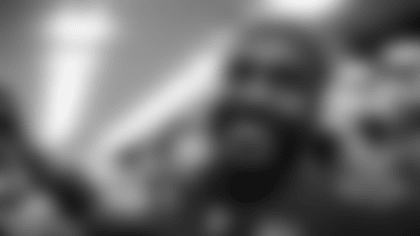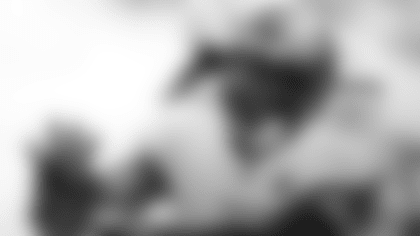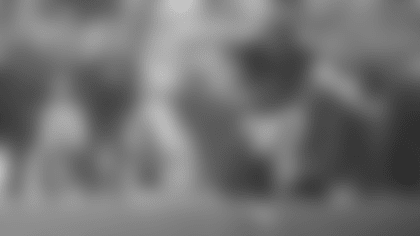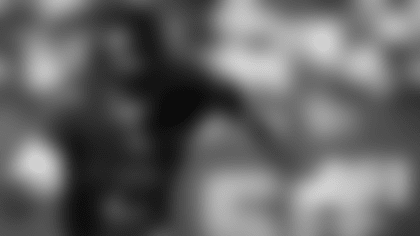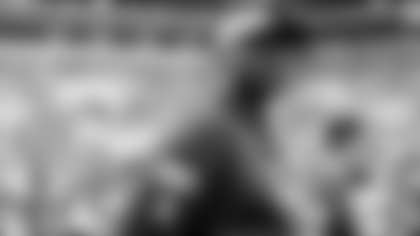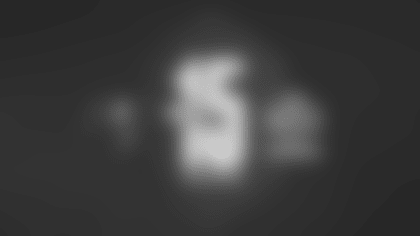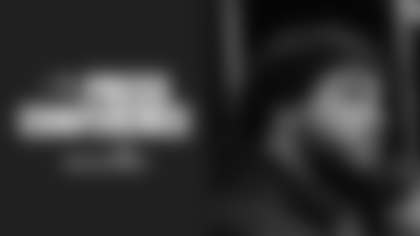In Monday's Data Crunch article (scroll to the bottom), I noted that Tampa Bay's offense has been second-best in the entire NFL in converting on third downs in the second half of games. That's one of the reasons that the Bucs have consistently been able to claw back into games after digging themselves deep holes…though generally not enough to get the "W" at the end.
That's only the tip of how different Buccaneer games have been before and after the intermission this season. The Buccaneers' 50.0% third-down rate in the second half is significantly better than the 41.9% mark it has put up in first halves. Even more stark is the difference on defense; Tampa Bay has allowed a third-down conversion rate of 46.8% before halftime but only 30.4% after halftime. Imagine if either of those numbers represented the Bucs' overall third-down defense – the first-half mark would be fourth-worst, while the second one would be second-best.
The shift in scoring numbers after halftime is stark, particularly in terms of the second and third periods. The Buccaneers' defense is giving up 15.9 points per second quarter this season, but only 3.5 points per third quarter. Some of that is probably attributable to opponents with big halftime leads becoming more conservative in the third quarter, but there have clearly been some effective "halftime adjustments" by the Buccaneers.
All of which suggests that it is possible for the Buccaneers to find a way to turn the defense around, as Gerald McCoy spoke about on Monday, at least to some degree. The Buccaneers' offense is averaging 28.6 points per game, seventh-best in the NFL. Just getting their first halves to look a bit more like their second halves on defense would put the team in a position to win more games. As McCoy and his teammates know, of course, just saying it could happen is one thing; now it has to be proven on the field.
Now on to your questions.
A reminder that you can send questions to me anytime you want on Twitter (@ScottSBucs) and they're easier to find if you include the hashtag #SSMailbagBucs. As you'll see from time to time, I also unilaterally appropriate for myself – as any good pirate captain would – questions I like that are meant for our Insider Live show or are simply responses to one of my previous tweets. I've also taken to stealing emails meant for our Salty Dogs podcast. As always, if you specifically want to get a question into the mailbag and would prefer to email your question, you can do so to tbbsocial@buccaneers.nfl.com.
I know there's a lot of disappointment about the Buccaneers' tumble to 3-5 after a hot start, and a lot of vitriol being passed around on Twitter, but I just don't understand a take like this one from Chris.
I mean, I get the sarcasm. It's not that I don't understand the question. I just do not understand why anyone would give up on a first-round draft pick after he had played all of five NFL games. You know what Gerald McCoy had after his first five NFL games: eight tackles and no sacks. Now he's been to six Pro Bowls. Haloti Ngata might be a more analogous type of player to Vea than McCoy, and he had 11 tackles and no sacks through five games.
Vita Vea was a highly coveted player in the draft because he's a very large man who moves in ways that very large men usually cannot. At the most basic level, he is a strong interior lineman who can occupy multiple blockers, clogging up running lanes and freeing other Buccaneer defenders to get after the passer. The Bucs obviously hope he will develop a pass-rush element to his game, as well, much like Ngata did. Ngata never became an NFL sack leader, but he settled in at about five a season and made it to five straight Pro Bowls for the Ravens.
Vea's rookie NFL season started in a very rough way, with a calf injury on the first day of training camp that was serious enough to keep him off the field for two months. Of course that means his season is off to a slow start, which at this point includes a stat line of just two tackles. He has played in the past five games and been on the field for roughly 50% of the defensive snaps in that span. As both Head Coach Dirk Koetter and Defensive Coordinator Mark Duffner have pointed out, the rookie lineman is playing about how you would expect a rookie lineman who hadn't been in a game since the previous December would play.
Is Vea a waste of a pick if he doesn't ever put up any big numbers this season? I say no for two reasons. One, a space-eater of his variety doesn't always have to fill up the stat line to make an impact. I'm not saying that Vea has made a huge non-statistical difference so far this year – in five total NFL games – but he could improve steadily throughout his debut campaign without it showing up much in the stat table.
Two, and more importantly, this is just his first season. The Buccaneers didn't draft Vea thinking he was going to be a big contributor for one year. They believe he will be a big part (literally) of their defensive front for years to come. Will they be right? I hope so, but we won't know for a few more years. Vea, like any draft pick, could become a bust. That's one of the possible outcomes. But he certainly isn't one now, or a wasted pick.
Max has obviously seen the note floating around the last few weeks that the Buccaneers' passing attack has been essentially keeping pace with the 2000 St. Louis Rams, the most prolific of the Rams' offenses during the Greatest Show on Turf era (even if it was the '99 team that actually won the Super Bowl).
That pace went down just a little with the Buccaneers' season-low total of 219 net passing yards last Sunday in Charlotte, but it's still close. St. Louis had 2,935 net passing yards after eight games and the Buccaneers currently have 2,853. There's another team in between, as the 2013 Denver Broncos had 2,868 net passing yards after eight games.
However, while I will provide the answer to your specific question, Max, I have to tell you that those 2000 Rams do not own the single-season record in that category. I mean, they did at the time, but Kurt Warner's group was later surpassed by Drew Brees and the Saints in 2011, and then they were surpassed by Peyton Manning and the Broncos in 2013. Here are the top five team marks for net passing yards in a single season in NFL history:
1. 2013 Denver Broncos: 5,444
2. 2011 New Orleans Saints: 5,347
3. 2000 St. Louis Rams: 5,232
4. 2011 New England Patriots: 5,084
5. 2016 New Orleans Saints: 5,074
The Rams really do stand out, though, as they put up those pinball numbers in a totally different era. In 2000, teams as a whole put up an average of 222.0 passing yards per team per game; in 2015, that number hit an all-time high of 259.2. This year, the league is on pace to outstrip even that mark, averaging 267.3 yards per team per game.
Anyway, back to the Buccaneers. With 2,853 net passing yards at the midway point, they are already on pace to top all of those teams, including the Greatest Show on Turf. The Buccaneers are averaging a league-best 356.6 yards per game, which works out to 5,706 through 16 games. (Since the Bucs have played exactly half of those 16 games, I didn't really have to break it down to that per-game number; all you have to do is double the current mark.)
So, Max, for the Buccaneers to achieve what you asked, they just have to keep doing what they're doing, or even about 60 yards per game less. Tampa Bay needs 2,380 more passing yards to pass the 2000 Rams, and that works out to 297.4 per game the rest of the way. To top Denver and own the record, the Buccaneers need 2,591 more yards, which works out to 323.9 per game.
Now, we should pump the brakes a little bit here, because "pace" statistics aren't very reliable until you get a lot closer to the end of the line. The Bucs have already banked 450 and 417-yard passing days in the first eight games, plus three more of 389 or more, and it's not reasonable to assume that's going to happen five more times in the next eight games. The Rams were on pace for 5,870 yards at this point in their 2000 season, and as noted above they finished more than 600 yards behind that target. The Broncos of 2013 hit the halfway point on pace for 5,736 yards and finished about 300 yards behind that.
I'm not trying to throw cold water on this. The Buccaneers have a legitimate shot at crossing 5,000 net passing yards this season, and if they do they'll be closing in on the top five of all time. They definitely could break the record. Still to come are games against pass defenses currently ranked 31st (New Orleans), 29th (Atlanta), 20th (Washington), 19th (Carolina), 17th (San Francisco) and 16th (N.Y. Giants), but also ones against the teams ranked second (Baltimore) and fifth (Dallas). If the Bucs can keep all their key offensive players healthy, as they have so far, there's every reason to believe they can keep putting up circus-type passing numbers. We'll see if they catch the Greatest Show on Turf.
I see no need to call you crazy, Luis, as this is a perfectly reasonable question with an easy answer.
Yes, this exists and in fact Jameis Winston has already used it. The Bucs brought in a VR system called SIDEKIQ in 2016 and Winston started using it at the beginning of training camp that year. The Buccaneers believed it could be a useful addition to what they were already doing to help Winston's development. Here's what Jason Licht said at the time when it was announced that the Bucs were going to make use of this technology:
"We are excited to be coming in on the front end of this new wave of technology that is designed to supplement the on-field and classroom work that our quarterbacks are already doing. Obviously, there is no real substitute for being on the field when it comes to getting our players ready for game action. However, this virtual reality technology allows us to enhance the learning experience for our quarterbacks without requiring them to put in additional time on the practice field."
Now, it's impossible to tell how much that experienced helped Winston along, but that was right after his rookie season so it was employed pretty early in his development. Winston had the best touchdown rate of his career that fall, but also his highest interception rate before this season.
We haven't heard much about VR since it was first brought up in 2016. One of the Buccaneers' coaches was asked about it recently and whether the player were still making use of it at the time, and he said that they currently were not. There was no indication that the team had grown dissatisfied with the system, only that they weren't making it part of their preparations this year. I would suggest you can find the reason for that mentioned several time in Licht's quote above: The best way to prepare a quarterback, by far, is to put him on the field with a real ball against a real defense.




















